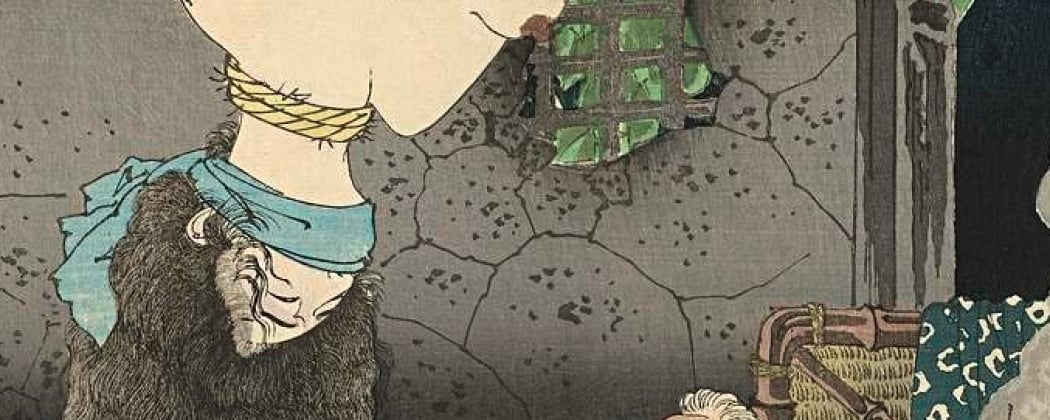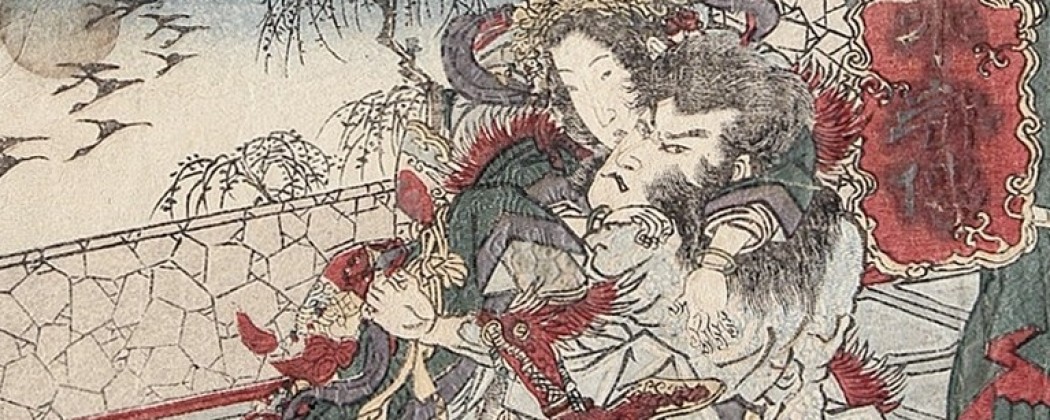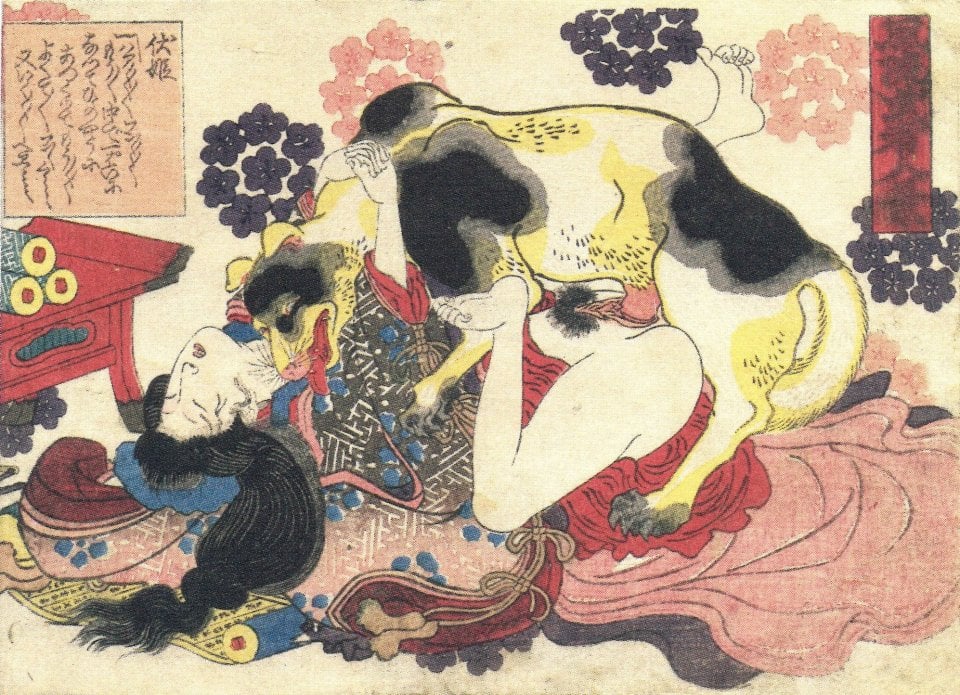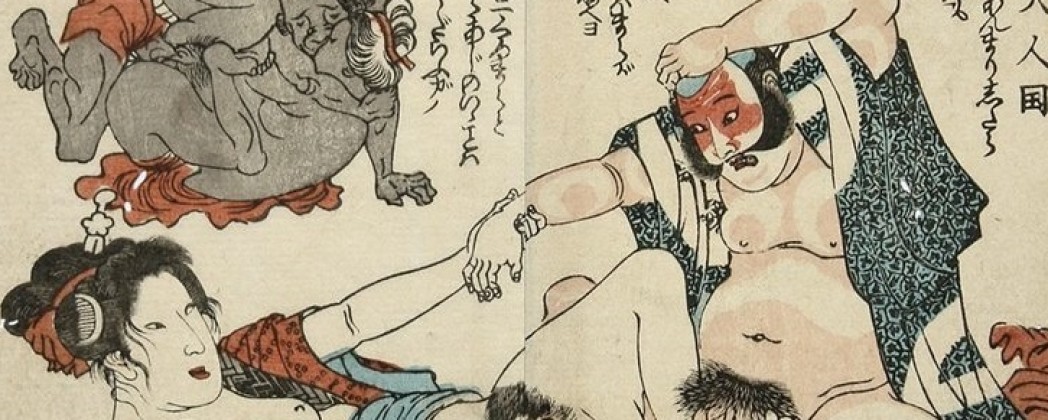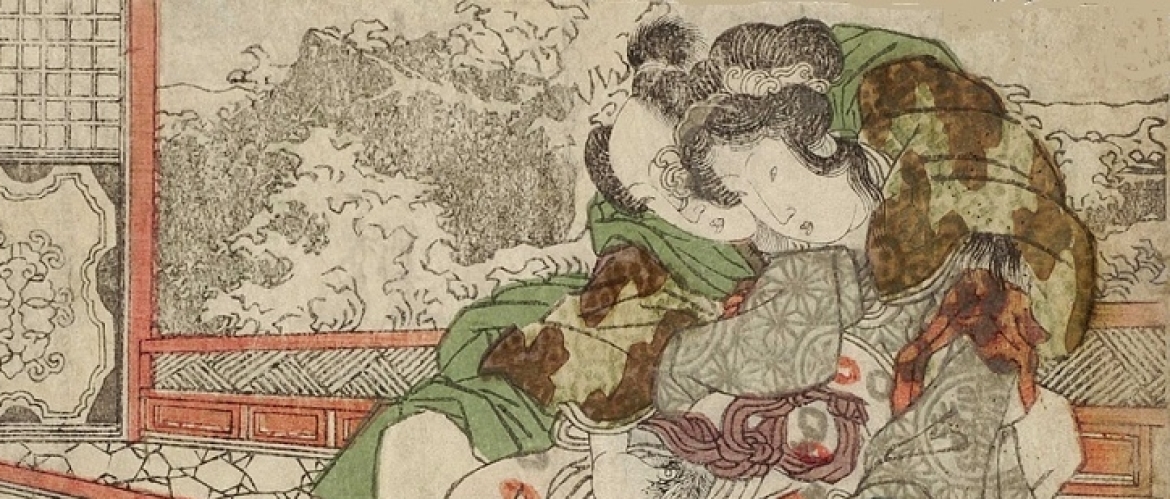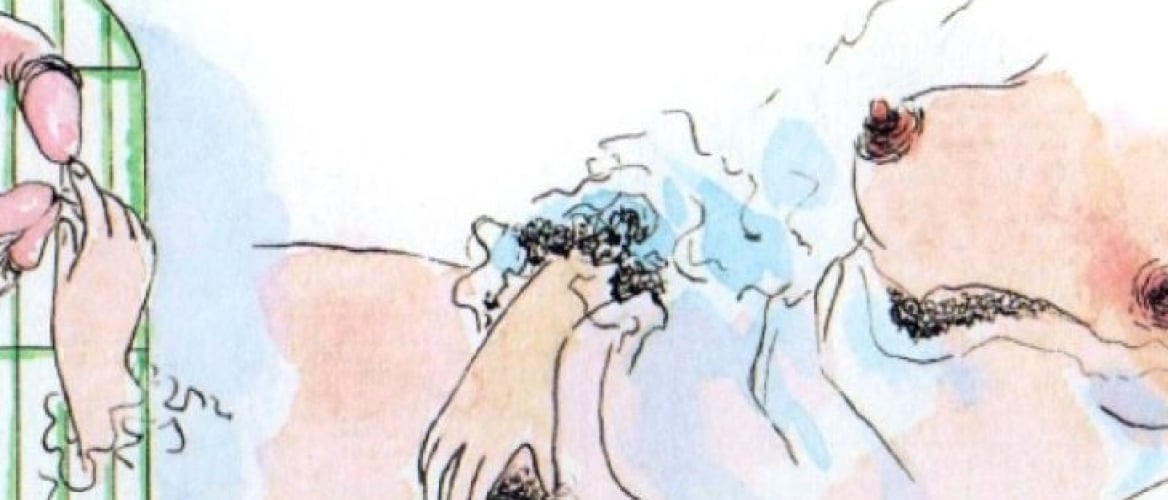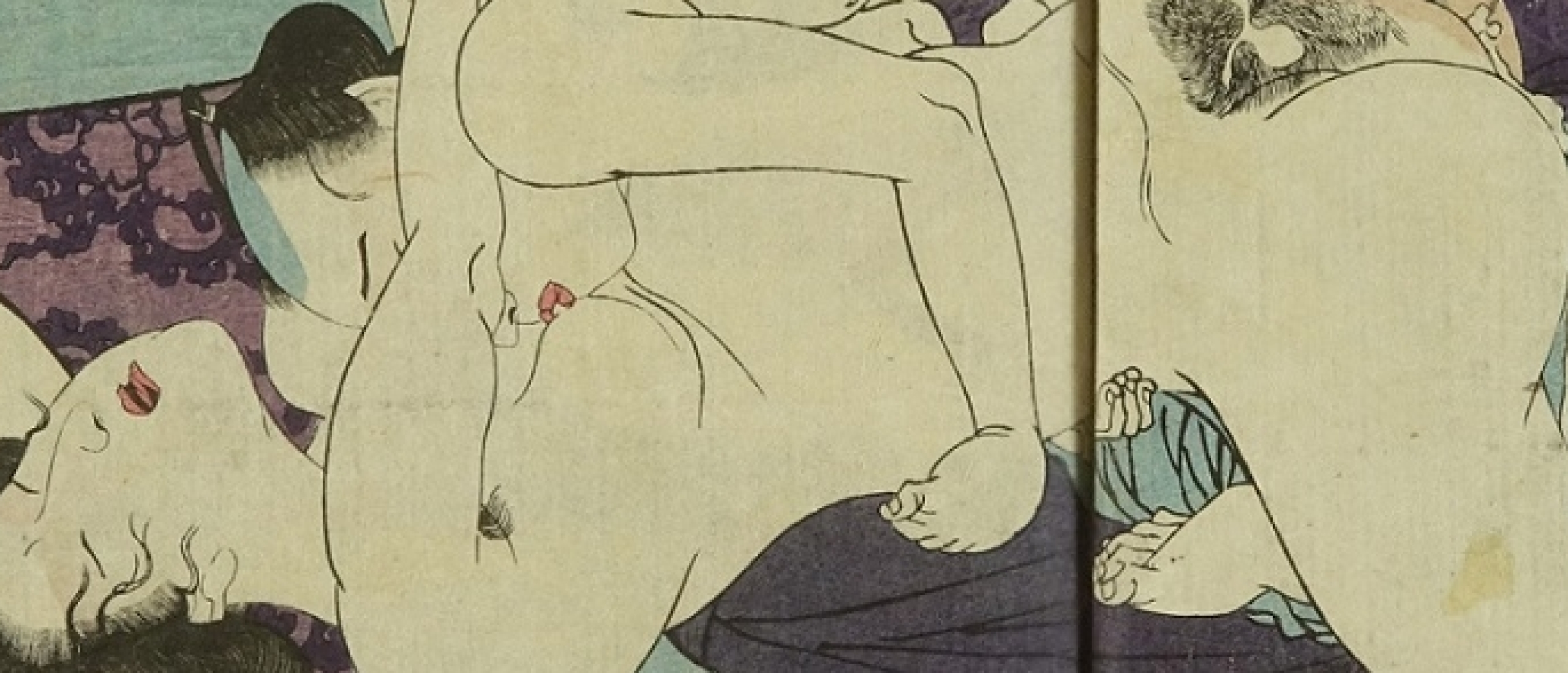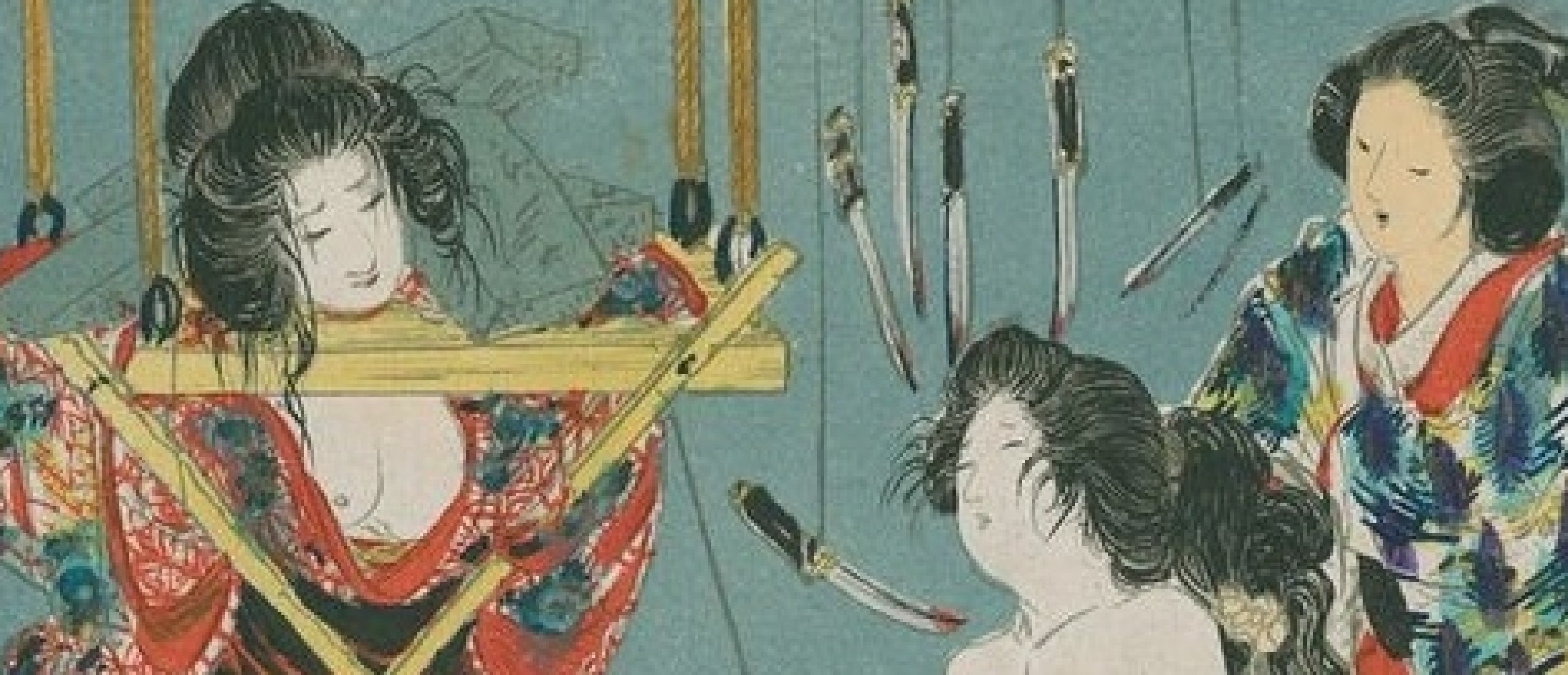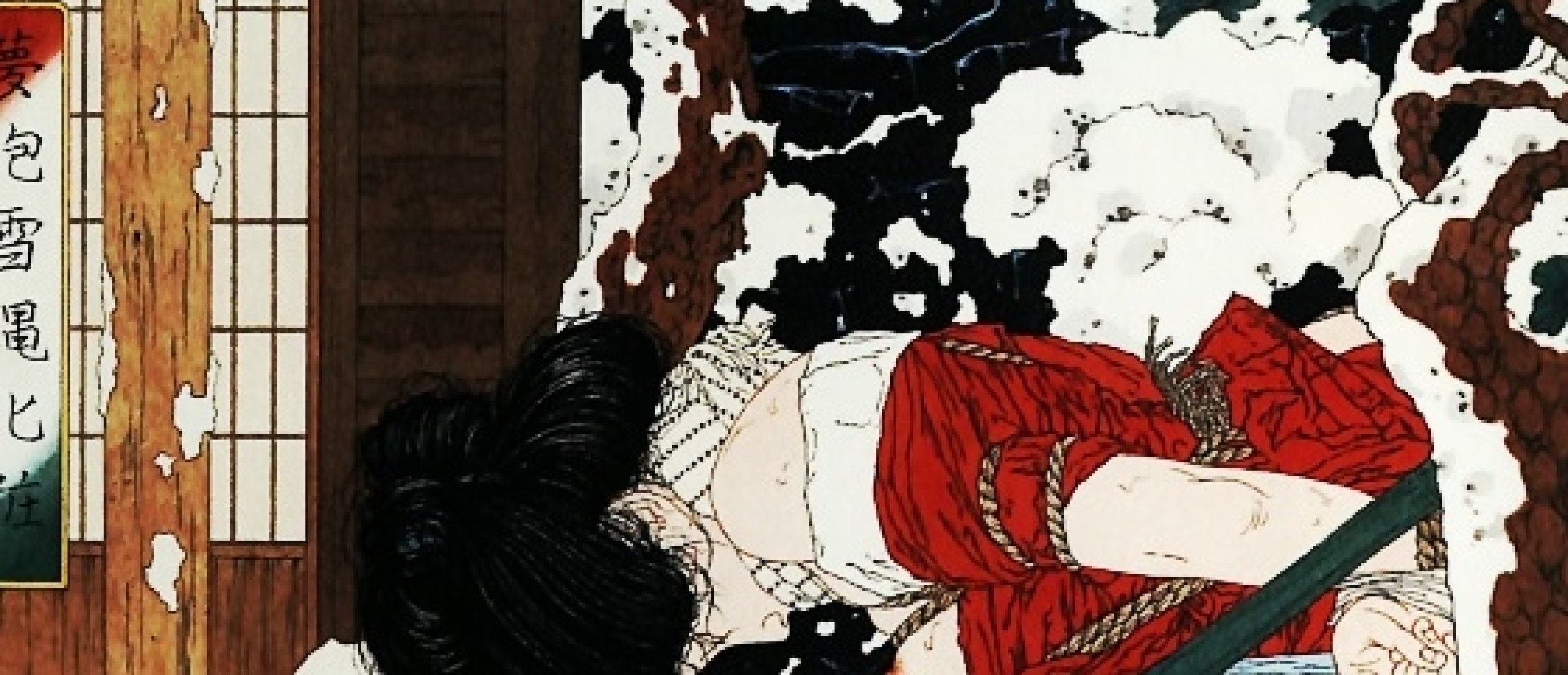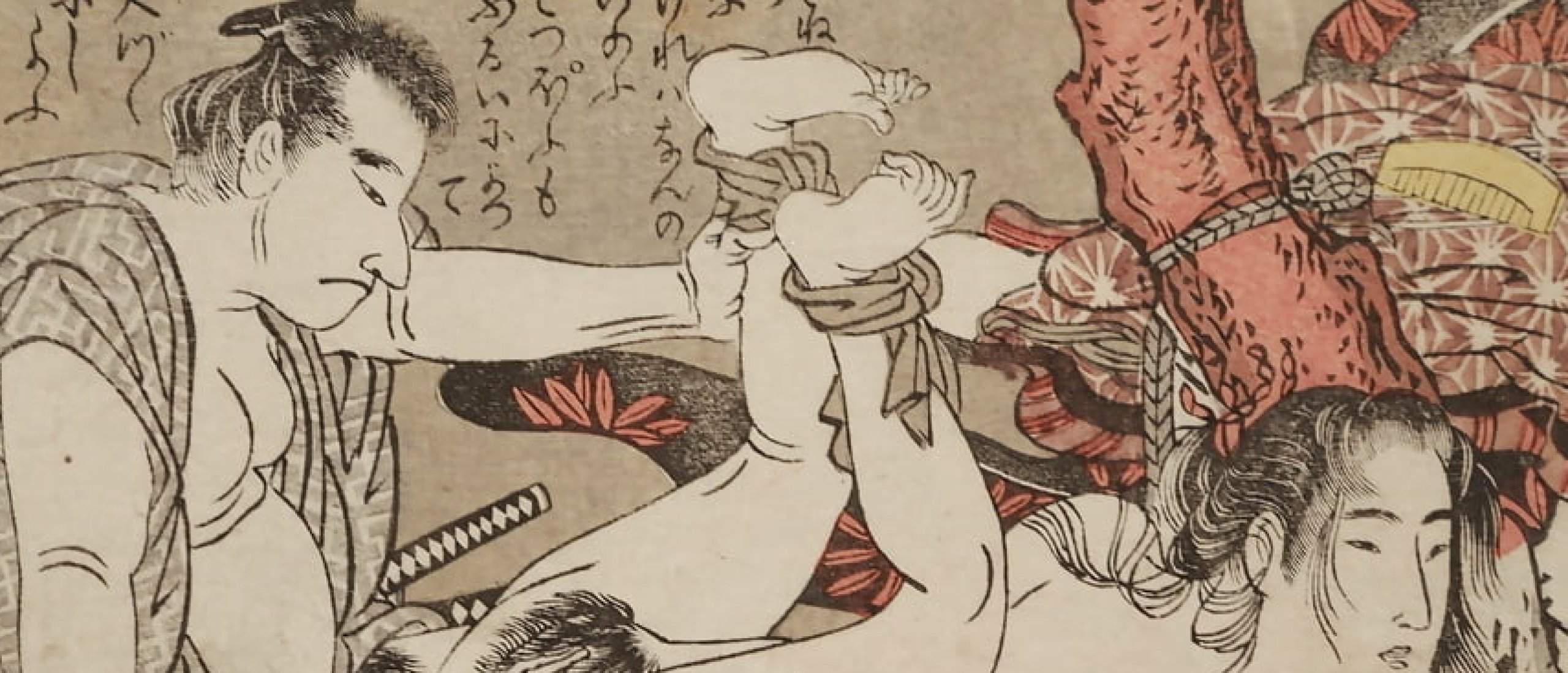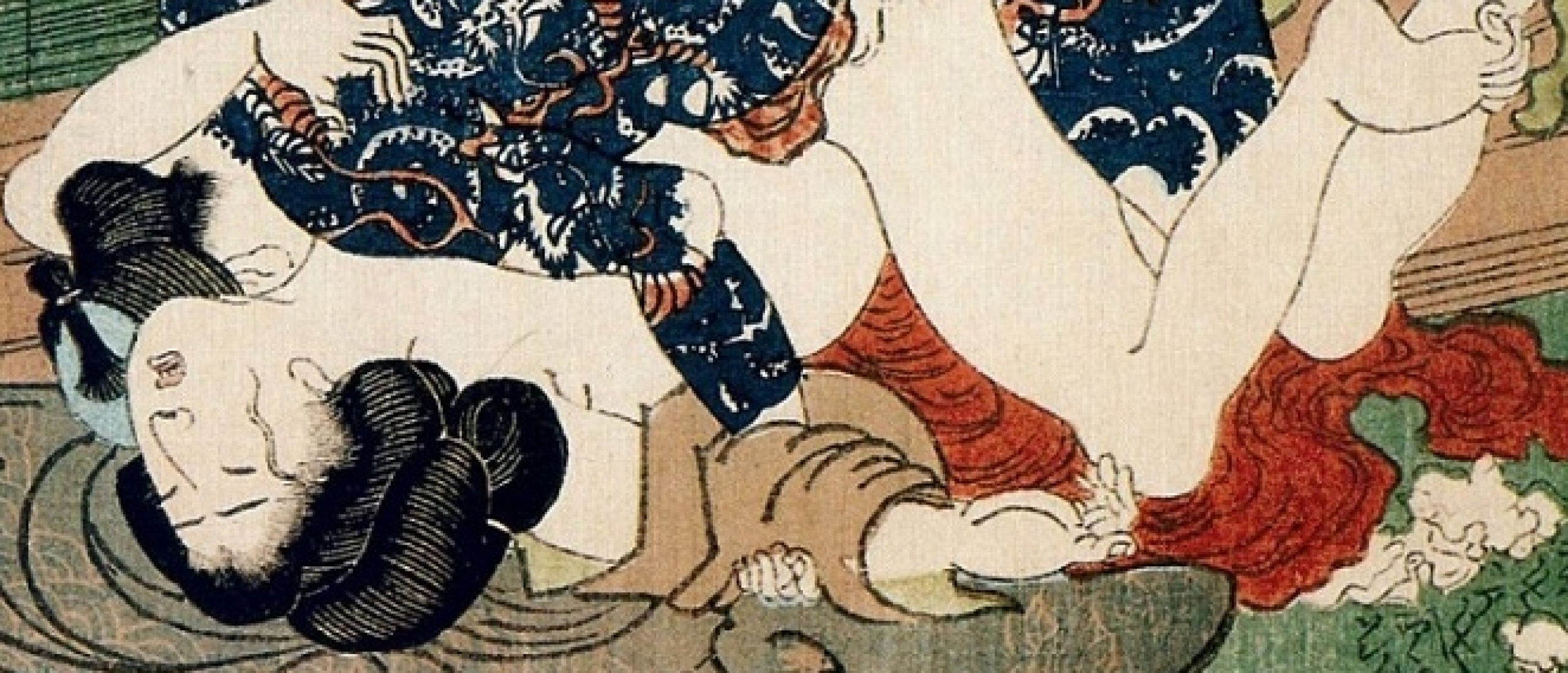
The Suikoden (Shuihu zhuan in Chinese) is a semi-historical Chinese novel that tells of the adventures of a band of 108 rebels, who sought refuge in the margins of Liangshan Marsh. These rebel warriors protected the poor and downtrodden, very much like Robin Hood’s band.
An Imitation of the Suikoden
Figure 1 comes from a set of twelve designs entitled Nazorae Suikoden (擬え水滸傳, An Imitation of the Suikoden) produced around 1830 by Utagawa Kuniyoshi. In this series, erotic scenes are paired with inset images of Suikoden heroes. The prints are each about 3.5 by 5 inches (9 by 13 centimeters), a size known as kôban.
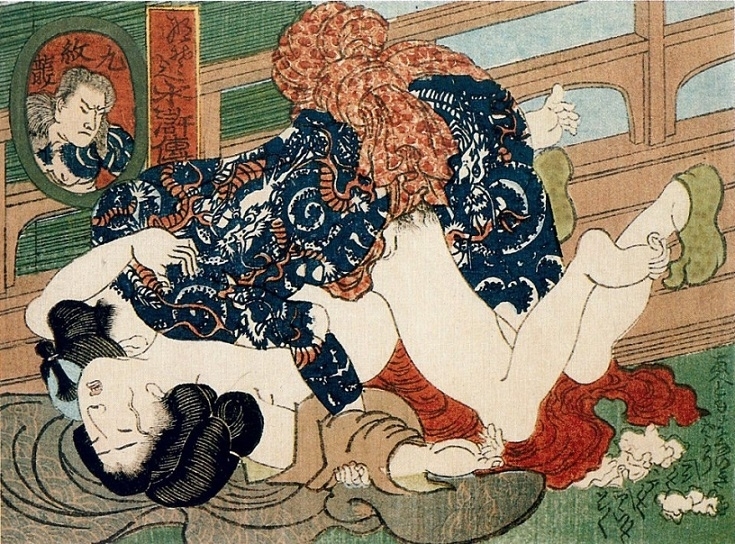
Fig.1. Inset features the Suikoden hero Kyûmonryû Shishin
Kyûmonryû Shishin
Kyûmonryû Shishin was one of the six heroes from The Hundred and Eight Heroes of the Popular Suikoden who were first illustrated on prints around 1827 and Kuniyoshi included three portraits of him in the series, which makes Shishin the most frequently depicted gang member (Fig.2).
Fearless Character
Shishin was a fearless character who makes his appearance as early as the first chapter of the novel. He was the son of a local lord, but liked to spend his time practicing martial arts and was not alt all interested in his agrarian responsibilities.
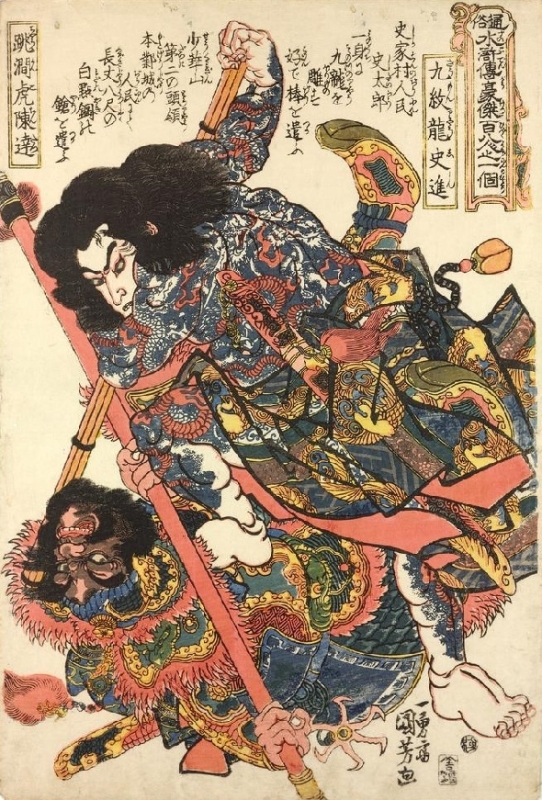
Fig.2. 'Shi Jin, the Nine Dragoned (Kyûmonryû Shishin), and Chen Da, the Gorge-Leaping Tiger (Chôkanko Chintatsu),'1827 (Bunsei 10) from the series The Hundred and Eight Heroes of the Popular Suikoden (Tsûzoku Suikoden gôketsu hyaku hachinin no hitori) by Utagawa Kuniyoshi (Japanese, 1797–1861) Publisher: Kagaya Kichiemon (Kichibei)

Fig.3. 'Shi Jin, the Nine Dragoned (Kyûmonryû Shishin)' (1843–47 (Tenpô 14–Kôka 4) from an untitled series of Shuihuzhuan (Suikoden) heroes by Kuniyoshi
The Nine Dragoned
He became good friends with three robber captains, a relationship which formed him to leave his home and village. Eventually they joined the Ryusanpaku legion together (in chapter 58 of the story). Shishin was nicknamed 'The Nine Dragoned' because of the nine dragons tattooed on his body.
Impervious to Fire
Kyûmonryû Shishin was extremely popular among the people of Edo, especially firemen. For firemen a dragon tattoo had a talismanic function. Takahiro Kitamura, who is considered one of America’s finest Japanese tattoo artists, writes: "In Edo-period Japan the dragon had a special significance for the firemen (hikeshi). As a deity of the sea and water and impervious to fire, the men of the fire-fighting brigades believed that the tattooed image of the dragon would protect them as they fought the fires of Edo." What better motif for the firemen to use, therefore, than Shinshin's tattoo of nine dragons.

Fig.4. Description: 'The Suikoden bandit Shi Jin sits on a woven bench.' Title: 'The Village of the Shi Clan on a Moonlit Night- Nine Dragon Tattoo (Tsuki hyakushi: Shikason tsukiyo- Kumonryu)' (1885) from the series 'One Hundred Aspects of the Moon' by Tsukioka Yoshitoshi
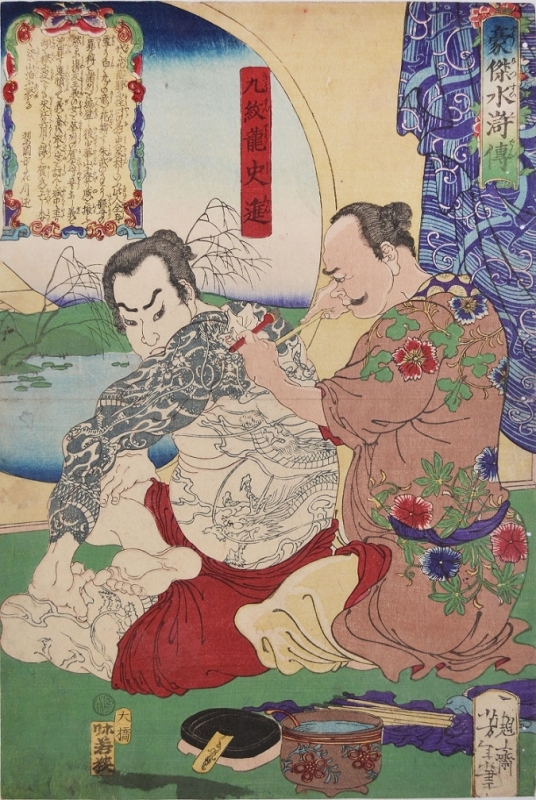
Fig.5. 'Kyumonryu Shishin' (1868) from the series 'Heroes of the Suikoden' by Tsukioka Yoshitoshi
One Hundred Aspects of the Moon
Today, one can still find Japanese men with a portrait of Shinshin tattooed on their back, precisely following Kuniyoshi's original design for his first Suikoden series. Kyûmonryû Shishin was not only portrayed by Kuniyoshi, but also by his pupil Yoshitoshi in the famous print series One Hundred Aspects of the Moon (Tsuki hyakushi - Fig.4) and Heroes of the Suikoden from 1868 (Fig.5.).
In Premium you can find the complete article including two

